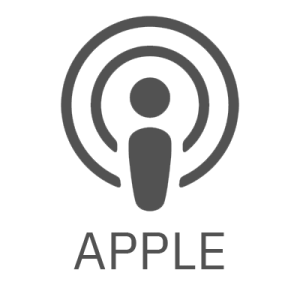
Inviting input from high performers early and often in the change process is one of the major keys to managing resistance in organizations. Join Dr. Janet Pilcher as she welcomes Dr. Charlotte Boling, a Leader Coach at Studer Education, to share how she coaches her partners to proactively prepare employees for success throughout the change process. Listen as Charlotte elaborates on the necessity of “facing the brutal facts” and explains how engaging high performers helps leaders to identify potential challenges and provide necessary support through organizational shifts.
This episode addresses questions such as:
- How does “facing the brutal facts” help leaders implement change?
- What proactive measures can leaders take to set up employees for success throughout the change process?
- How can leaders create a supportive culture that encourages feedback from high performers?
Latest Episodes
Charlotte Boling: By being proactive, you can keep everyone performing at their very best, which is going to result in students growing and learning and being their very best.
[Intro music plays in background]
Introduction
Janet Pilcher: Hello everyone, welcome to today’s Accelerate Your Performance podcast. I’m your host, Janet Pilcher. Thank you for tuning in this week as we focus on what it takes for leaders to achieve important outcomes.
Today, we’re focusing on leaders coaching employees through change. And in particular, how leaders manage resistance to change with employees. In our last episode, I talked about how thriving organizations need leaders who can guide their teams through various stages of change within the organizational framework.
I also reviewed the four phases of change. Let’s have a quick recap so you can get the most out of today’s episode. The first phase of change is when we’re unconsciously unskilled, where we don’t yet know what we don’t know and are not yet as competent as we want to be.
And remember, the second phase is consciously unskilled. It’s where we become aware of what we don’t know, we’ve identified a gap in our current skills, and now we know what we have to do to be more effective.
The third phase then is consciously skilled. It’s when we still need a little support to fully execute and sometimes we’re a little unsettled and uncomfortable, but we understand the need to change and have accepted if not embraced it.
The last phase is where we become unconsciously skilled and it occurs when those changes have become second nature to us without even thinking about it. This becomes natural to part of what we do.
This week, we continue to focus on how to lead employees through these phases of change because improvement is crucial to growth. And when employees are engaged in the improvement process, they feel more connected to the overall mission of the organization.
To totally get deep into this topic today, I’ve invited Dr. Charlotte Boling to talk about her experiences in coaching partners to lead their staff through organizational change. She does an exceptional job with this.
Charlotte is a leader coach at Studer Education who brings extensive experience in both K12 and higher education. She’s held several roles, including teacher. instructional coach, and district leader, associate professor, assistant dean, department director and professional development designer. She’s also served as Director of the School of Education where she assumed responsibility for teaching and learning for all programs in the department.
If you ask Charlotte what drives her professionally, she’ll say her goal has always been to empower others so they can make a difference in whatever role they have. And she certainly does that as she coaches our partners in organizational efficiency and continuous improvement efforts across the country.
And I’m especially excited for you to hear her insights on managing change and managing that resistance to change. So let’s dive right in.
Interview
Janet Pilcher: It’s with pleasure that I welcome Charlotte Boling to our show today. Charlotte, so great to have you here, and I’m so looking forward to the topic that we’re going to talk about today.
Charlotte Boling: Thank you, Janet. I’m excited to chat with you about this change process that teachers and leaders go through. So I’m excited to be here.
Janet Pilcher: That’s great. So I teed it up a little bit to our audience, and I had a chance to do a solocast to talk a little bit about the personal phases of change that we go through. And I’m focusing today, Charlotte, on that resistance of change, looking at the phases of change and as with any change, and we ourselves resist change when we have to go through it. And there are natural ways that we resist. And so at that onset of change, leaders have to manage that resistance.
And that’s what we want to talk about today and such an important topic and a question that I get asked many times when we’re doing something and trying to make a change and we have people who resist that change, what’s the best way to manage that? What’s the best way to build interactions with our teams?
And that’s what you do so well and we’ll talk about today. So I’m going to start with asking you questions and also as asking, I know you do this so well. Answer the questions, but also teach us, Charlotte. You know, teach us how you do that and show us, by example, the great work that you do with others in the field.
So let’s just start with, I’ve heard you talk about the importance of facing the brutal facts as we manage change. What does that mean to you as someone who coaches leaders?
Charlotte Boling: From the onsite of looking at a particular change situation, so regardless if it’s a new equipment, a new process, a new curriculum, it’s important to stand back as the leader and look at the situation. Look at all available data. Look at your people and their abilities and their talents and gifts that they have. Look at the situation and then really be honest with yourself about where you are and where you want to go, where your people are, where the data is as far as how you move towards your goal.
That being brutally honest means that you can get clear about your goal and where you are standing. So we say often in our coaching world, start where you stand. You’ve got to figure out where you are and where the entire situation is. Your people, your equipment, your things, everything that you’re going to need to move toward your goal. You’re brutally honest about that. So with yourself so that you begin at the right place. It’s really about moving forward.
But to know that you’ve got to you’ve got to truly understand where you are so that you can take that step towards improvement.
Janet Pilcher: Yeah, it’s that, as we’re talking about that, it’s that true assessment, right? That pre assessment that diagnose–we’re diagnosing where we are and we’re using the data and the brutal, the brutal facts of the data to help us diagnose. And if we cheat on that, then we basically, you know, are not doing ourselves any favors, right? Because we’re not going to create the right strategies or approaches because we’re just trying to build our own comfort to kind of manage through that instead of looking at what’s real in front of us. Really, really important to do.
So how do you work with a leader to help manage like when resistance occurs? So we’ve got the brutal facts. We’re looking at what we want to do. We have a situation that we’re going to move forward. And as we move that forward, people may initially be somewhat excited about it. And then the reality happens. You know, we’re in the process of acting and people begin to be to get uncomfortable. So how do you work with a leader to help them manage that initial resistance of that naturally occurs?
Charlotte Boling: It does. And so one example I’m going to use and lean on is a curriculum adoption. Ok, so I have several partners who went through that process this past year. And one thing I coach them on when we look at this process, I begin with this graphic that we use in our coaching world of the phases of change. And I introduce them to understanding where their employees are along that continuum.
Along that continuum, you have people at phase one who are unconsciously unskilled, which means they’re just beginning. They may not even know the questions to ask.
At that second step, they’re consciously unskilled. They know that they don’t know, but they really need supports to help guide them as they move forward.
And then you have the consciously skilled person who’s ready to absorb and ready to work with and take that improvement method and move forward with it.
And then in the fourth category, we have the unconsciously skilled. That person is your high performer. They’re your irreplaceable. They’re that teacher who could have managed the whole thing for you.
Many times it is that unconsciously skilled person, your high performer, who may demonstrate some behaviors that seem like resistance. The way that I help coach my leaders is it’s really important to look at all pieces of that behavior. And is it truly resistance, or is it an uncomfortable phase of learning something new and no longer performing at that very high level that they hold themselves accountable to and expect themselves to be at that very high level?
Sometimes when we’re learning something new, we have to get at that uncomfortable stage of going back and spending a lot of effort and energy to plan. To really review all of the pieces that go into place and it’s clunky. It doesn’t feel good. And especially for the person who is a high performer, it’s not where they want to be. Right? So that person who is resistant, maybe resistant’s not the right word for them. Maybe your new learner, and it just doesn’t feel good. So helping that person who is engaging with something new is really important.
So with the curriculum adoption that we were working with this summer, with several of my partners, we began by looking at “what would that look like from August forward, and what would we need to put in place?”
And so with the understanding of these phases of continuum, the phases that the leaders, teachers and the leaders are going to be in themselves, it’s really important to think about, okay, “where are we?”
And then in August, one thing I shared with my principals is in August, that curriculum is going to look so shiny and new and they’re going to love every little thing about it. By September, it starts using some of its shininess because they’re looking for their favorite pieces or the go-tos, “where are these parts that I’m used to using because I can’t find them right away. It takes extra energy and effort?”
And so from a principal’s perspective and district leaders perspective, what we did was we really coached into providing support a few weeks after the school year began so that our teachers didn’t feel that dip, that uncomfortable clunkiness that comes when you’re learning something new.
We pushed in support, heavy, about three, four weeks into the school year. And then as teachers experience the new equipment, the new curriculum, you know, whatever it happens to be, in a few more weeks, they discover that next layer of things because they’ve used it, and now they see what works and what doesn’t and how it helps them be the teacher or the leader they want to be.
So then there are really deep questions about “how do we fix this, and what do I need to know to move it forward?” So providing that support was one thing that we really talked about making sure that we had in place so that, as our high performers started using pieces, we wanted to make sure that we prop them up. We didn’t want that clunkiness to happen.
Janet Pilcher: Mmmhmm. What I think is really important, Charlotte, that I’m hearing from you is when we look at those phases of change, we know those phases are going to occur, and we know as you talked about, our high performers are going to be the ones that really struggle through that [laughs] because they’re accustomed to being high performers, and they want to stay there.
When they’re introduced to something new, they might slip into a different phase in order to get back there. But knowing that, right, knowing that and anticipating that, that there’s going to be slippage there. Sometimes I think as leaders, when there’s a high performer, we just expect that they’re going to take it and run with it and do the things that they need to do because they’ve been high performers. But really giving them grace almost to say that’s not necessarily going to happen, so let’s provide them with the extra support so that we can get them there quicker and that they can then possibly be advocates and support others.
So once you get into that process and now they’ve had that support and they move forward, you know, what happens in that process?
Charlotte Boling: So the next piece that’s really important from a leader’s perspective is to make sure that you keep in touch with each teacher and especially your high performers about what’s working well. So this is a wonderful place to push in rounding and begin to round with your teachers. Staying in touch with people who are closest to the work is where you find out which supports you need to put in place.
And so your high performers are going to identify the missing pieces or the clunky pieces or the pieces that a new teacher or an unconsciously unskilled person will need additional help with. So by rounding early and often with high performers, a leader can head off any problems. The rest of the faculty may never even know that these things occurred because they’ve been proactive in pushing in support that really has been the high performer has made the leader aware of where those supports need to be pushed in. By having that in place, you solve those problems for your unconsciously unskilled, those brand-new teachers who are just being hired just coming into the play or those year two, year three teachers who are beginning to use the curriculum, really lean on that curriculum to know what to use and how to use it.
So rounding really at all levels is important, but your high performer can be especially helpful in knowing what kinds of supports to provide for your less skilled teachers.
Janet Pilcher: Yeah. So I love the conversation because sometimes what we do is that we really do neglect our high performers. I mean, we really do. I mean, they don’t need us. When we’re not making those changes, they don’t need us. They do need us, and they do need the recognition, so we need to be more mindful of that. But for the most part, they’re the ones who we don’t have to have to worry about so much. But I love the conversation about paying ridiculous attention to them and letting them serve as a partner in that process on your team.
Charlotte, as you’ve worked, so you’ve worked with principals or school district leaders and you’ve coached them to focus on high performers and really recognize the phases of change and where all people are along the lines there. You know, what outcomes have you seen? I mean, how has it worked?
Charlotte Boling: Just so beautifully. I wish I had put things in place like this when I was leading some of these pieces. But what I’ve found is by really paying close attention to the change process and looking at people, identifying people on your staff who can provide that support, this most recent curriculum adoption has been incredibly smooth.
There have been slight hiccups, but when there were hiccups, we knew what they were going to be, and we pushed in rather quickly to provide that support, to provide—and many times it was, you know, one example was one of the principals developed a quick scavenger hunt on where to find specific resources in this new curriculum, brought his teachers together. And so in a fun approach, they had recently had a very similar training at the district level. He took the same training at the district level, made a scavenger hunt back at his school, made it fun, and some of his high performers helped create those pieces.
So it’s things like that. Understanding which teachers he could lean on to help provide those additional supports, made this process so smooth and kept the focus on the instruction, kept the focus on the students so that the instructional work and that clunkiness where it was never even visible for the students, they never felt it.
Janet Pilcher: Yeah.
Charlotte Boling: They felt smooth instruction because we worked really hard behind the scenes to make sure that those phases, we identified where teachers were along the phases of change and then pushed in support as it was needed for the different teachers. It was beautiful. It is beautiful.
Janet Pilcher: Yeah, you know, so as we close Charlotte, as we think about people will ask, as I started out, how do people resist? Why do people resist? Or how do we work through people resisting change? And what I hear is sometimes our inaction or our pre-work or the work that we do up front as leaders move people toward resisting change.
And so, you know, not that we intend to, but just by not prepping or doing the work ahead of time, sometimes leads to that natural resistance of change.
So as we’re connecting with our listeners, if there were a piece of advice that you would give them coming out of this, you know, what would the one or two things be that you would say, “hey, when you start that, just make sure that these are the things you do,” because I want to pull that wrapper around so that what are the must-haves to do that help us get them connected to us as part of our team?
Charlotte Boling: Begin early with the high performers. Your high performers are going to be the ones who help support the entire process and help you with newer or less skilled teachers.
And so, by working with them and by beginning to round with them early, get close to the work, get close to the actions that are taking place so that you can be proactive in solving those problems before they ever surface.
Janet Pilcher: Yeah.
Charlotte Boling: —is, is really important. And then the next piece, I think, is just communicate and over-communicate. Let people know. So before there’s anxiety and before there’s the, “oh, this is new and I’m not sure what to do,” solve that problem by saying, “we’ve got this under control. We’re working on a resource to provide to you, and we’re going to provide this training so that you know exactly what to do, when to do, and how to do so that everyone is set up for success.”
That’s really the crux of this. When people feel resistant, it’s because they feel like they are not being set up for success. They’re in a situation where they’re not going to maintain the success or the expectations that they place on themselves. By being proactive, you can keep everyone performing at their very best, which is going to result in students growing and learning and being their very best.
Janet Pilcher: Yeah. Such good advice. And next week, we’re going to talk with a leader that you work with. And so you’ve teed it up really nicely. She’s going to talk about what her experience is as she applied some of the work that you’re talking about today. And I look forward to connecting with her.
I know you’ve said and really talked very favorably about the partners that you work with and the leader’s ability to really get in front of this and do excellent work. So we’re going to highlight one of your partners next week and show, you know, “this is what it looks like in action, and this is what it feels like from a leader’s perspective when they actually implement that.”
Charlotte, thank you so much for your time today. Such an important topic. Sometimes people want to focus on the low performers. Today, what we’re doing is we’re focusing on the high performers, because the high performers are the ones that are so important to bring with us and to help us help others manage through any change that occurs. And they can be brilliant at that. Thank you so much.
Charlotte Boling: Thank you, Janet.
Conclusion
[Outro music plays in the background.]
Janet Pilcher: I hope you enjoyed our in-depth discussion on managing change. And I also hope you walk away feeling confident about the rounding process so you can use it to manage any resistance you might be facing with your own employees.
And if you found this episode helpful, please share it with a friend or colleague who might benefit from it. If you’re on Apple Podcasts, you can do this by holding down the three little dots next to the title and clicking “Share Episode.”
If you’d like to read more about the four phases of change and see a visual graphic, please check the additional resources provided in our show notes today.
And as always, I thank you for tuning in to this episode of Accelerate Your Performance. I look forward to connecting with you next time as we continue to focus on the Nine Principles Framework so that we can be our best at work. Have a great week, everyone.








